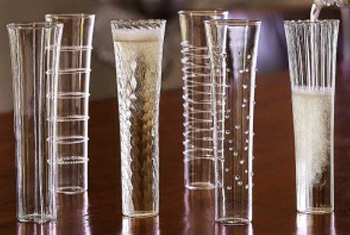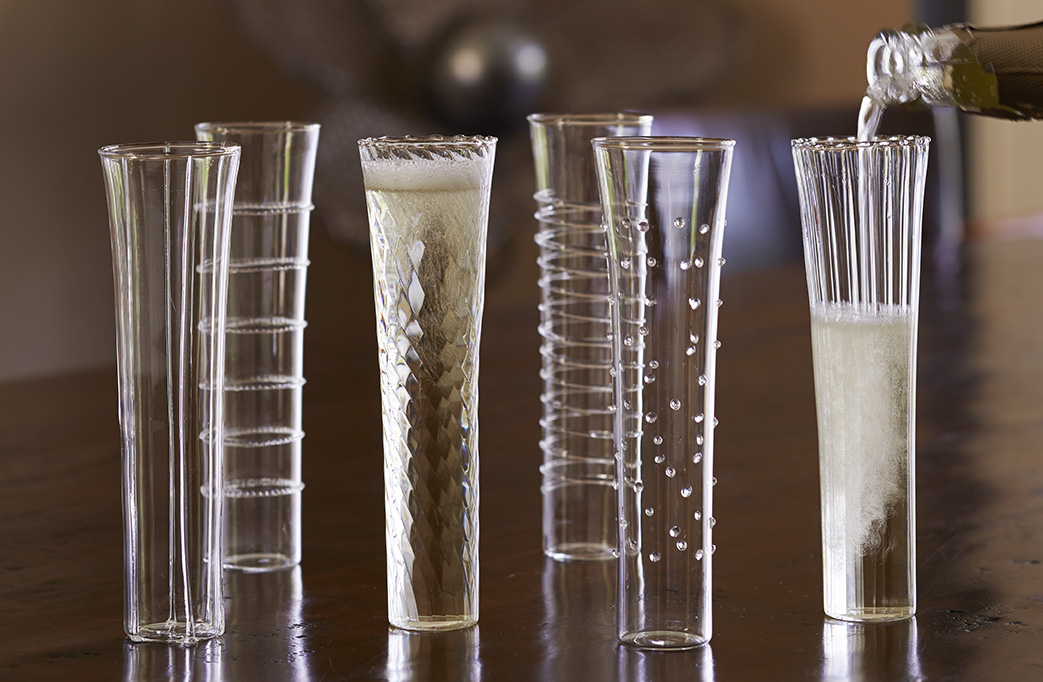
Carbonated bubbles in sparkling wine and beer activate our taste buds, spraying droplets of aromatic chemicals into the air, according to a recent article by researchers at Columbia University, published in The Wall Street Journal. Bubbles mix the beverage, affecting its scent and flavor; they absorb aromatic compounds as they rise, and this constant convection of bubbles adds to the flavor of the beverage. The smaller the bubble, the higher quality your sparkling wine will be.

Champagne Glasses
The champagne glass shape will affect how thoroughly the bubbles mix. A narrow flute will augment the flavor more than a vintage coupe, so when you break out the sparkling wine on New Year’s Eve, consider using flutes for the most flavorful experience.
IWA Wine’s wide range of champagne flutes and coupes
Dry or Sweet?
Brut Nature – The driest Champagne with no additional sugar
Extra Brut – Toward the dry end, but with a touch of sweetness
Brut – A balanced Champagne style that is the most common
Sec – Starting to become sweeter, but with enough dryness to satisfy most guests
Demi-sec / Off-dry – A semi-sweet Champagne
Doux / Dulce – This is an extremely sweet wine, best with dessert
How to Serve Champagne
When ready to serve the Champagne, put it into the refrigerator for about an hour, until it reaches a temperature around 50°F. If the bottle is properly chilled, it will not foam everywhere and the “pop” will be subdued.
Consider a dramatic opening with a Champagne saber to impress your guests.
If you open too many bottles and don’t want to waste them, or to preserve the bubbles in between courses, consider using a specially designed Champagne stopper.